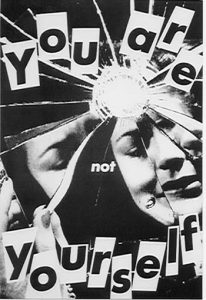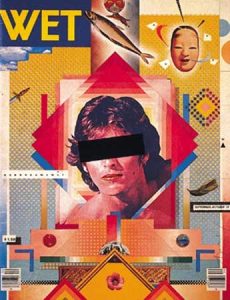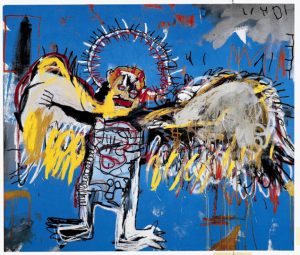Marking a departure from Modernism, Postmodernism is a philosophical movement that was characterised by scepticism, a general suspicion of reasoning and of maintaining political and economic power. Questions were being asked, ideologies and objects were being deconstructed. We began to truly understand and appreciate objects for what they are.

I liked the amount of emotion Kruger was able to capture within this piece and how the typography brings in elements of graphic design, rather than just photography. Additionally, the ‘not’ is a lot smaller in size and not cut up, meaning that it could be easily missed, bringing double meanings to the piece and highlighting how the subject feels. I thought that the broken text reflected the imagery of the shattered mirror, showing that the subject could be perhaps feeling that her life is falling apart. The addition of the tear drop reinforces this.

I liked the composition of this piece. Although there are lots of random objects that don’t seem to fit together, the piece is balanced. The viewer is automatically drawn to the portrait in the centre, due to the composition, and due to the layered triangles surrounding the image. However, most crucially, we are denied the emotion of the eyes which makes this a very ambiguous piece, allowing the audience to depict it with their own connections. This highly saturated and contrasted portrait appears in some of Greiman’s other work also. Although I find it hard to work in a collage manner, I do like the effect which is created, everything has become deconstructed and disjointed but still remains comfortable. The pyramid shapes at the bottom on the piece also bring a spiritual element which seems to question our existence.
The fundamental element that stands out in this painting is the ring around the subject’s head, along with the wings. These additions give the painting connotations of Jesus Christ and his crown of thorns, raising spiritual questions towards the meaning of life. The hidden phallic symbol could also be included in these questions whilst the child-like imagery and lack of definitive lines bring innocence to the image, hiding some of its deep meaning. The ring could also be linked to Basquiat’s crown icon. The intensity and the speed of the painting could also be influenced by his intoxicating drug use and gives a feeling of struggle and suffocation.
Image one: Brenda Kruger, 1981, ‘You Are Not Yourself’
Image two: Cover for WET magazine, designed by April Greiman, 1979
Image three: Jean-Michel Basquiat, Untitled (Fallen Angel), 1981

